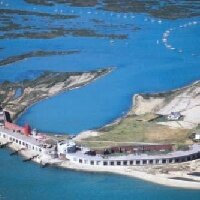Coastal Defence and the Historic Environment


In recent years Government has increasingly adopted a more strategic, long-term and sustainable approach to flood and coastal defence, which seeks to embrace all aspects of the environment, including historic remains. This document:
- provides advice on the implications of coastal and flood defence for the historic environment to those involved in coastal planning and coastal defence and to local authority historic environment officers;
- sets out how the protection of historic remains can be fully integrated within the shoreline management planning process; and
- considers in detail the implications for the historic environment of the increasing number of managed realignment schemes likely to arise from a more sustainable coastal defence policy and provides guidance on appropriate responses.
This guidance is currently being revised in response to the Governments 2005 publication Taking forward a new Government strategy for flood and coastal erosion risk management.
For further information please contact .
Shoreline Management Plan Review and the Historic Environment: English Heritage Guidance 2006
This guidance amplifies ‘Coastal Defence and the Historic Environment: English Heritage Guidance 2003’. It is concerned with Shoreline Management Plans, (SMPs), which are high-level strategic plans for coastal management over 20, 50 and 100 year time spans. SMPs are produced by Coastal Groups, (soon to be re-formed as Strategic Coastal Groups), formed of representatives from the Environment Agency, Local Authorities and other bodies, operating under Defra guidance . The existing SMPs are currently being reviewed, to produce ‘Second Generation SMPs’, and there will be periodic reviews approximately every ten years.
The English Heritage Guidance of 2006 is intended to help ensure adequate consideration of the coastal historic environment during SMP Review. In selecting the preferred management option for lengths of coastline (‘Hold the Line’, ‘Advance the Line’, ‘Managed Realignment’, or ‘No Active Intervention), a wide range of issues has to be considered – relating to technical, economic, social and conservation considerations. The SMP Client Steering Groups, or Key Stakeholder Groups, provide the means for EH Regional staff to participate in decision-making.
In order to provide the evidence base for participation in the SMP Review process and to enhance coastal Historic Environment Records so as to inform development control decisions, English Heritage is commissioning a national programme of Rapid Coastal Zone Assessment Surveys.
For further information contact .
What's New?
-
The National Heritage List for England is now live on the English Heritage website.
-
Welcome to the HER21 page. This page offers access to the full suite of HER21 project reports.
